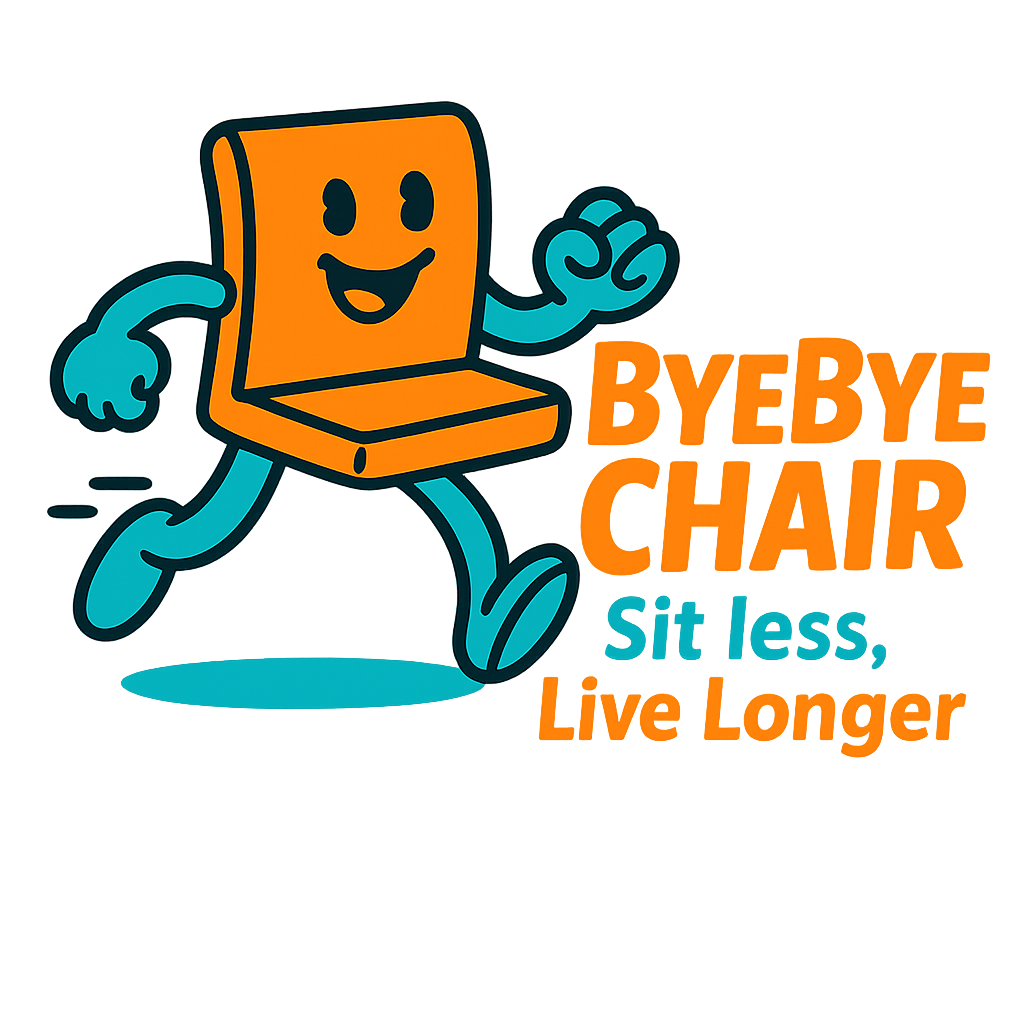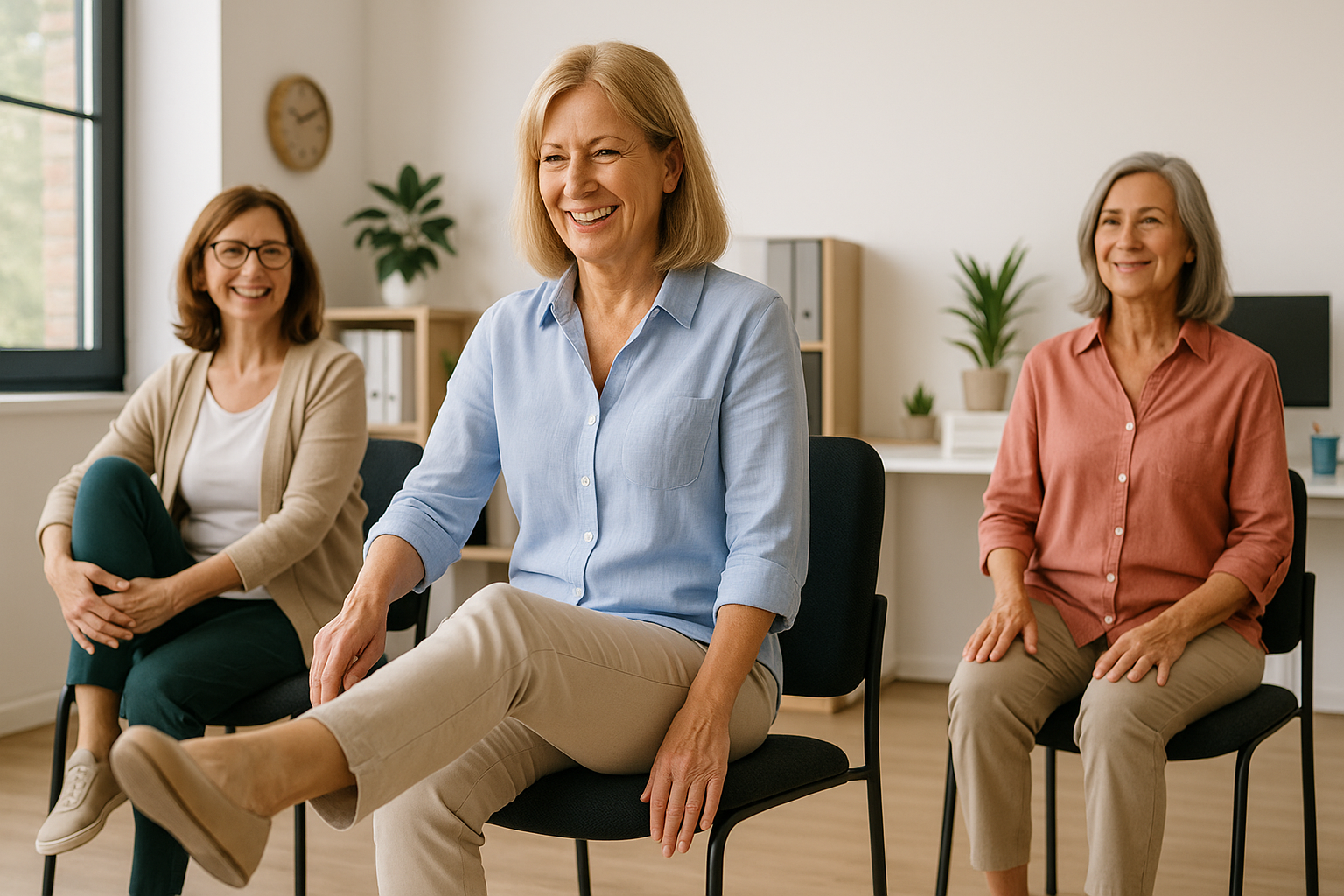Why Micro-Movements Matter
Most of us know that sitting too much is bad for our health. Yet modern life often leaves us chained to a chair—at work, during commutes, or while relaxing at home. Studies show that the average adult spends 7–10 hours sitting per day, and for office workers, it can be even more.
Extended sitting is linked to:
- Tight hips and hamstrings
- Poor circulation and swelling in the legs
- Back and neck pain from slouched posture
- Higher risks of obesity, diabetes, and cardiovascular disease
- Lower productivity, mood, and focus
The problem is not sitting itself—it’s sitting without breaks. That’s where micro-movements come in.
Micro-movements are tiny, intentional exercises that take less than a minute. They don’t require equipment, special clothing, or even leaving your chair. But when practiced regularly, they counteract stiffness, boost blood flow, and refresh both body and mind.
The Science Behind Small Moves
Our bodies were built for movement. When we sit still for long stretches, large muscle groups—especially in the legs and hips—switch off. Blood circulation slows, metabolism dips, and muscles tighten.
Micro-movements restore balance by:
- Activating dormant muscles (like calves and quads)
- Improving blood flow and reducing risks of swelling or clots
- Encouraging better posture by resetting spinal alignment
- Boosting focus and mood through short bursts of physical engagement
Research published in the Journal of Applied Physiology shows that even brief muscular contractions throughout the day can significantly improve circulation and reduce negative effects of prolonged sitting. Another study found that mini-breaks every 30 minutes reduce discomfort and improve focus at work.
The takeaway: movement snacks matter just as much as workout sessions.
Micro-Movement #1: Calf Raises
Why they work:
The calf muscles act like a pump, pushing blood back up toward the heart. When you sit too long, circulation slows, and fluid collects in the legs. Calf raises wake up this pump.
Standing version:
- Stand behind your chair for balance.
- Place feet hip-width apart.
- Lift heels slowly, rising onto your toes.
- Hold for 2 seconds, then lower down.
- Repeat 15–20 times.
Seated version (for calls or tight spaces):
- Sit with your feet flat on the floor.
- Press into the balls of your feet and lift your heels as high as possible.
- Lower slowly, repeat 20–30 times.
Duration: 30–45 seconds.
Benefits: Improves circulation, prevents swelling, energizes legs, reduces fatigue.
Micro-Movement #2: Hip Openers
Why they work:
Sitting shortens the hip flexors and compresses the lower spine, leading to stiffness and back pain. Hip openers reverse this tension.
Seated hip opener (figure-4 stretch):
- Sit tall with feet flat on the floor.
- Cross your right ankle over your left knee.
- Keep back straight and lean forward gently.
- Hold for 20 seconds.
- Switch legs.
Standing variation:
- Hold a chair for balance.
- Cross one ankle over the opposite knee.
- Push hips back slightly as if starting a squat.
- Hold for 20 seconds, then switch sides.
Duration: 40–60 seconds.
Benefits: Relieves hip tension, reduces lower back pain, improves posture.
Three Chair-Friendly Exercises You Can Do in Under a Minute
Even if you can’t stand up, you can still recharge your body with these movements.
1. Seated Torso Twist
- Sit upright with both feet on the floor.
- Place your right hand on the backrest.
- Gently twist your torso to the right.
- Hold 15 seconds, switch sides.
Benefits: Increases spinal mobility, relieves mid-back stiffness, aids digestion.
2. Seated Leg Extensions
- Sit tall with feet flat.
- Extend your right leg until straight and parallel to the floor.
- Hold 2–3 seconds, lower slowly.
- Repeat 10–12 times per leg.
Benefits: Strengthens quads, improves blood flow, prevents stiffness.
3. Shoulder Rolls
- Sit with arms relaxed at sides.
- Roll shoulders forward in circles 10 times.
- Reverse direction for 10 more.
Benefits: Relieves neck and shoulder tension, improves posture.
Duration for all three: Less than 1 minute.
How to Build a Micro-Movement Habit
The hardest part is not the exercise—it’s remembering to do it. Here’s how to make it stick:
- Set a timer: Use your phone, smartwatch, or computer reminder every 30–60 minutes.
- Habit stacking: Pair micro-movements with routine actions (e.g., after sending an email, before answering a call).
- Make it social: If you work with others, invite colleagues to join. It becomes less awkward and more fun.
- Track your consistency: Use a sticky note or app to mark each time you move. Visual progress builds motivation.
Over time, these small steps become automatic—just like brushing your teeth.
Micro-Movements at Work vs. at Home
At work:
- Discreet moves like seated calf raises or shoulder rolls fit into a professional setting.
- Even walking to the printer or taking the stairs counts as a micro-break.
At home:
- You can go bigger—add squats, hip circles, or standing stretches.
- Pair movement with habits like making coffee or brushing teeth.
Consistency matters more than location. The goal is to sprinkle activity throughout your entire day.
Common Myths About Desk Exercises
❌ Myth 1: Small moves don’t count.
✅ Truth: Research proves even 30 seconds of activity improves blood flow and reduces stiffness.
❌ Myth 2: You need a gym to stay healthy.
✅ Truth: Your body benefits from micro-activity anywhere—even in a chair.
❌ Myth 3: People will think you look silly.
✅ Truth: Most people admire colleagues who prioritize health. And many moves are nearly invisible.
FAQ: Quick Answers About Micro-Movements
Q: How often should I do them?
A: Every 30–60 minutes. Think of them as “movement snacks.”
Q: Can these replace regular workouts?
A: No. They’re supplements to daily health, not substitutes for cardio or strength training.
Q: Do I need equipment?
A: No—all moves use bodyweight only.
Q: Can kids or seniors do them?
A: Yes. They’re safe, adaptable, and beneficial for all ages.
Step-by-Step Daily Routine (5 Minutes Total)
- Morning coffee: 20 standing calf raises.
- Mid-morning: Seated torso twist, 15 seconds per side.
- Before lunch: Hip opener stretch, 30 seconds each side.
- Afternoon slump: 12 seated leg extensions each leg.
- End of day: Shoulder rolls, 10 forward + 10 backward.
This routine adds up to only 5 minutes of effort—yet keeps muscles awake, posture strong, and energy levels high.
Final Thoughts
We often think fitness requires long workouts, but health is built in the small moments too. Micro-movements like calf raises, hip openers, and chair exercises may seem minor, but repeated consistently, they:
- Improve circulation
- Reduce stiffness and pain
- Boost productivity and focus
- Support long-term mobility and health
You don’t need equipment. You don’t need a gym. You just need one minute, multiple times per day.
Call to Action
Start today. The next time you check your phone or finish an email, do 10 calf raises. Before your next meeting, try a hip opener stretch. While waiting for a file to download, roll your shoulders.
Remember: micro-movements add up to macro results.
Your body will thank you—now and years from now.

